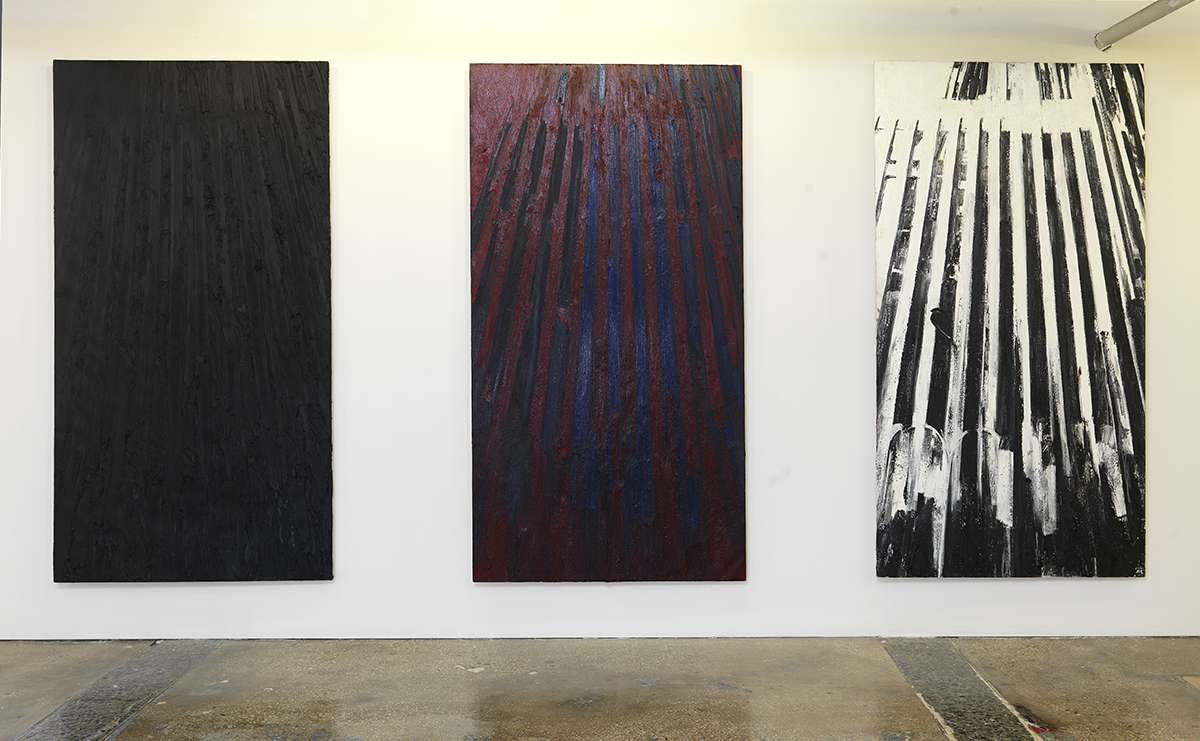by Jarrett Earnest
“Hold this,” Nicole Wittenberg says, handing me one end of the measuring tape she is snaking across the room. After some calculation she sets the 8-by-4-foot panel of FOX NEWS I (2014) in front of her open studio doorway and marches me straight back to the other end of the hall: “This is fifty feet; I want this image to firm up—look better—at forty or fifty feet rather than fifteen.”
Wittenberg’s work analyzes how images and paint function in space, which is also about how they unfold in time. As you approach her FOX NEWS series from that distance, they depict the facade of the International Style skyscraper at 1211 Avenue of the Americas, headquarters of News Corps and 21st Century Fox. As you walk closer, the iconic vertical bands of the building’s glass and stone begin to abstract into light and dark, opening onto a highly energetic abstract surface. Face to face, they tower over you not as images but as physical presences. You see how thick the paint is, almost a paste from the grit mixed into it—marble dust, sugar, sand—so that the image is formed, patted, and scraped into existence, like a heavily stuccoed wall. When the series is shown in a row the verticals rhyme with the building’s striations, creating a rhythmic alternation between wall and painting. As you move through Manhattan, its architecture presents itself differently depending on the weather and time of day—sometimes you don’t even see the buildings but you feel them overhead running down the street. Wittenberg’s variations give different aspects of those sensations, pulling apart and then reintegrating tactile surface and image, bodily experience and vision, nearness and distance.
